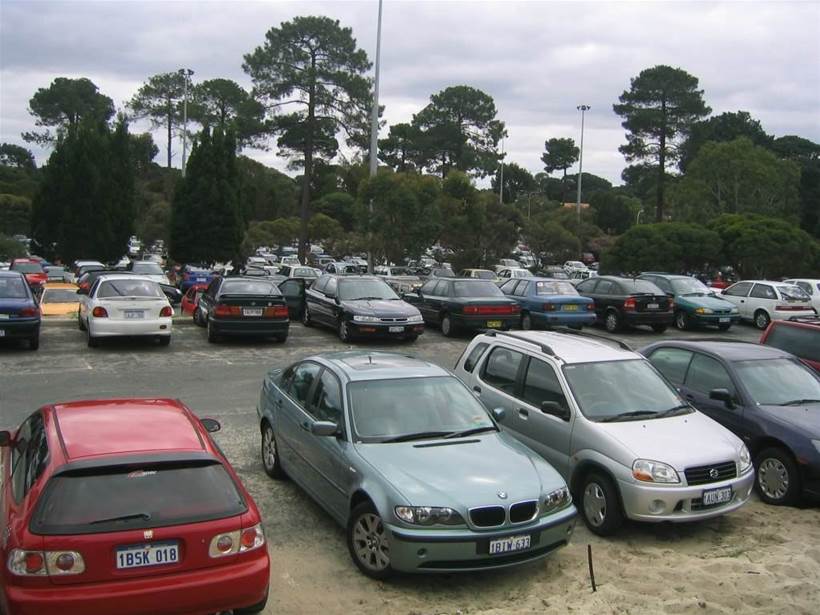Smart parking company ParKam is leading a world-first smart parking deployment underway at Curtin University in Western Australia.
The project will be the world’s largest deployment of a smart parking system that uses cloud-based artificial intelligence (AI) and machine learning to process images.
ParKam is implementing its camera-based system, which will spot available parking spaces amongst nearly 6,000 bays at Curtin University’s Perth campus. The system will also guide drivers to those spaces by displaying instructions on signs or by providing turn-by-turn directions via an app.
It will likely be the first time an Australian organisation has used the technology on such a large scale, said Graham Arndt, Curtin University’s Director of Operations and Maintenance, Properties, Facilities and Development.
“I’m not aware of anybody else that had done it [at this scale] before we did. At nearly 6,000 bays, I think that would make us the biggest in Australia,” Arndt said.
The project is also the biggest of its type globally, according to Nikki Eylon, ParKam’s Managing Director ANZ. “No-one’s ever done in the open-air such a large image-processing and AI-based parking deployment,” she said.
Better accuracy
Curtin University went all-in on the technology after ParKam’s system excelled during testing against competing products.
“The ParKam system’s interface was sophisticated, impressive and very simple to use,” Arndt said. He cited a heat map feature, which shows the location of parked cars and car park fill patterns, as one of the system’s useful capabilities.
The system was also more accurate than competing products and the underground wire loops the university used previously to detect cars entering and exiting car parks.
“We used loop counting before, but it wasn’t particularly accurate. Say you have 200 cars go in. The loops might have recorded that as 180,” Arndt said. “This new system is looking at the actual bays and telling you whether the bay is occupied or not.”
The university also liked that the system could spot how many cars were searching for parking spaces, rather than just focussing on how many bays were available. The system can even determine whether vehicles will fit into available parking bays.
Arndt was also impressed by the system’s ability to learn. “The more cars it sees, the more accurate it becomes,” he said. “It’s like having multiple pairs of eyes and a hidden brain.”
The system even worked accurately during a hail storm. That’s because it had learned from ParKam deployments in other countries, which operate in hail, fog, snow and other difficult conditions.
Beyond parking
These capabilities will allow Curtin University to do much more than speed up parking.
For example, the system recognises parking violations, such as cars parked for too long in time-limited or no-stopping zones, or on nature strips. During one week of testing, it detected 86 parked cars that weren’t in designated bays.
It also provides multiple video streams for other uses, and APIs to connect third-party applications.
Those capabilities have encouraged Arndt to view the system as a long-term platform for other uses. For example, it could detect when no-one is using a car park at night, allowing the university to dim the car park lights to reduce energy usage.
And all the cameras to be deployed for the project will also operate as CCTV cameras.
Air-quality is another consideration. Arndt said that if, on average, the system enables every driver to take one less minute finding a parking bay each day, that would reduce their collective driving time by 150 hours. That would greatly affect air quality, he said.
Cost-effectiveness
Other key reasons the university chose the ParKam system were its cost-effectiveness and scalability, said Arndt.
Moving to a camera-based system will allow the university to monitor large areas without installing dozens of sensors.
And the university doesn’t have to shut down entire car parks during deployment, as it might have needed do to install underground sensors. It won’t need to dig up large parts of the car park surface to maintain sensors either.
Growing user base
Curtin University joins a growing number of Australian ParKam customers, including Wyndham City Council in Victoria. The council was highly commended by the Municipal Association of Victoria’s Smart City Achievement of the Year judges for its ParKam deployment.
ParKam users also include Perth Airport, the Australian Road Research Board and St Clair Shopping Centre in Western Sydney, among others in Australia and around the world. There are also six additional ParKam deployments underway in Australia, including by councils.
“Our long term strategy is to be the leading provider in the smart parking and smart mobility market,” Eylon said.






